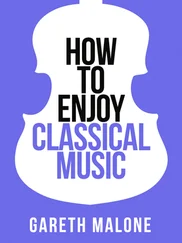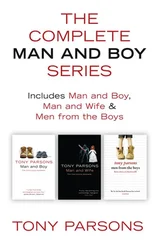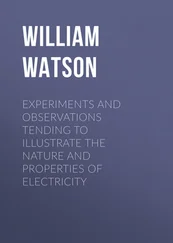Mark Changizi - Harnessed - How Language and Music Mimicked Nature and Transformed Ape to Man
Здесь есть возможность читать онлайн «Mark Changizi - Harnessed - How Language and Music Mimicked Nature and Transformed Ape to Man» весь текст электронной книги совершенно бесплатно (целиком полную версию без сокращений). В некоторых случаях можно слушать аудио, скачать через торрент в формате fb2 и присутствует краткое содержание. Год выпуска: 2011, Издательство: Perseus Books Group, Жанр: Старинная литература, на английском языке. Описание произведения, (предисловие) а так же отзывы посетителей доступны на портале библиотеки ЛибКат.
- Название:Harnessed: How Language and Music Mimicked Nature and Transformed Ape to Man
- Автор:
- Издательство:Perseus Books Group
- Жанр:
- Год:2011
- ISBN:нет данных
- Рейтинг книги:5 / 5. Голосов: 1
-
Избранное:Добавить в избранное
- Отзывы:
-
Ваша оценка:
- 100
- 1
- 2
- 3
- 4
- 5
Harnessed: How Language and Music Mimicked Nature and Transformed Ape to Man: краткое содержание, описание и аннотация
Предлагаем к чтению аннотацию, описание, краткое содержание или предисловие (зависит от того, что написал сам автор книги «Harnessed: How Language and Music Mimicked Nature and Transformed Ape to Man»). Если вы не нашли необходимую информацию о книге — напишите в комментариях, мы постараемся отыскать её.
Harnessed: How Language and Music Mimicked Nature and Transformed Ape to Man — читать онлайн бесплатно полную книгу (весь текст) целиком
Ниже представлен текст книги, разбитый по страницам. Система сохранения места последней прочитанной страницы, позволяет с удобством читать онлайн бесплатно книгу «Harnessed: How Language and Music Mimicked Nature and Transformed Ape to Man», без необходимости каждый раз заново искать на чём Вы остановились. Поставьте закладку, и сможете в любой момент перейти на страницу, на которой закончили чтение.
Интервал:
Закладка:
While we now have some idea why there’s no solely visual art that rivals music, we still have barely begun our quest to understand why music is so compelling that we are willing to purchase thousands of albums.
At the Heart of a Theory of Music
If music sounds human in fundamental respects, as our discussion in the section before last suggested, then it seems to have made heroic efforts to obfuscate this fact. I readily admit that music doesn’t sound human to me —not consciously , at least. But recall the section titled “Below the Radar” from Chapter 1, where I said that we don’t necessarily expect cultural artifacts to mimic nature “all the way up.” It may be the case that much of our lower-level auditory apparatus thinks that music sounds like humans, but that because of certain high-level dissimilarities, we —our conscious selves—don’t notice it. How, then, can I hope to convince anyone? I have to convince you , after all, not your lower-level auditory areas!
What we need are some qualifying hurdles that a theory of music should have to leap over to gain a hearing . . . hurdles that, once cleared, will serve to persuade some of Earth’s teeming music buffs that music does indeed sound like people moving. Toward this end, here are four such hurdles—questions that any aspiring theory of music might hope to answer.
Brain : Why do we have a brain for music?
Emotion : Why is music emotionally evocative?
Dance : Why do we dance?
Structure : Why is music organized the way it is?
If a theory can answer all four questions, then I believe we should start paying attention.
To help clarify what I mean by these questions, let’s run through them in the context of a particular lay theory of music: the “heartbeat” theory. Although there is probably more than just one heartbeat theory held by laypeople, the main theme appears to be that a heart has a beat, as music does. Of course, we don’t typically hear our own heartbeat, much less others’, so when the theory is fleshed out, it is often suggested that the fundamental beat was laid down when we were in utero. One of the constants of the good fetal life was Momma’s heartbeat, and music takes us back to those oceanic, one-with-the-universe feelings we long ago lost. I’m not suggesting that this is a good theory, by any means, but it will aid me in illustrating the four hurdles. I would be hesitant, by the way, to call this “lub-dub” theory of music crazy—our understanding of the origins of music is so woeful that any nonspooky theory is worth a look. Let’s see how lub-dubs fare with our four hurdles for a theory of music.
The first hurdle was this: “Why do we have a brain for music?” That is, why are our brains capable of processing music? For example, fax machines are designed to process the auditory modulations occurring in fax machine communication, but to our ears fax machines sound like a fairly continuous screech-brrr —we don’t have brains capable of processing fax machine sounds. Music may well sound homogeneously screechy-brrrey to nonhuman ears, but it sounds richly dynamic and structured to our ears. How might the lub-dub theorist explain why we have a brain for music? Best I can figure, the lub-dubber could say that our in-utero days of warmth and comfort get strongly associated to Momma’s heartbeat, and the musical beat taps into those associations, bringing back warm fetus feelings. One difficulty for this hypothesis is that learned associations often don’t last forever, so why would those Momma’s-heartbeat associations be so strong among adults? There are lots of beatlike stimuli outside of the womb: some are nice, some are not nice. Why wouldn’t those out-of-the-womb sounds become the dominant associations, with Momma’s heartbeat washed away? And if Momma’s lub-dubs are, for some reason, not washed away, then why aren’t there other in utero experiences that forever stay with us? Why don’t we, say, like to wear artificial umbilical cords, thereby evoking recollections of the womb? And why, at any rate, do we think we were so happy in the womb? Maybe those days, supposing they leave any trace at all, are associated with nothing whatsoever. (Or perhaps with horror.) The lub-dub theory of music does not have a plausible story for why we have a brain ready and eager to soak up a beat.
The lub-dub theory of music origins also comes up short in the second major demand on a theory of music: that it explain why music is evocative, or emotional. This was the subject of the previous section. Heartbeats are made by people, but heartbeat sounds amount to a one-dimensional parameter—faster or slower rate—and are not sufficiently rich to capture much of the range of human emotion. Accordingly, heartbeats won’t help much in explaining the range of emotions music can elicit in listeners. Psychophysiologists who look for physiological correlates of emotion take a variety of measurements (e.g., heart rate, blood pressure, skin conductance), not just one. Heart sounds aren’t rich enough to tug at all music’s heartstrings.
Heartbeats also fail the “dance” hurdle. The “dance” requirement is that we explain why it is that music should elicit dance. This fundamental fact about music is a strange thing for sounds to do. In fact, it is a strange thing for any stimulus to do, in any modality. For lub-dubs, the difficulty for the dance hurdle is that even if lub-dubs were fondly recalled by us, and even if they managed to elicit a wide range of emotions, we would have no idea why they should provoke post-uterine people to move, given that even fetuses don’t move to Momma’s heartbeat.
The final requirement of a theory of music is that it must explain the structure of music, a tall order. Lub-dubs do have a beat, of course, but heartbeats are far too simple to begin to explain the many other structural regularities found in music. For starters, where is the melody?
Sorry, Mom (again). Thanks for the good times in your uterus, but I’m afraid your heartbeats are not the source of my fascination with music.
Although the lub-dub theory fails the four requirements for a theory of music, the music-sounds-like-human-movement theory of music, as we will see, has answers to all four. We have a brain for music because possessing auditory mechanisms for recognizing what people are doing around us is clearly advantageous. Music is evocative because it sounds like human behaviors, many of which are expressive in their nature—something we will discuss further in a few pages. Music gets us dancing because, as we will also discuss, we social apes are prone to mimic the movements of others. And, finally, the movement theory is sufficiently powerful that it can explain a lot of the structure of music— that will require the upcoming chapter and the Encore (at the end of the book) to describe.
Underlying Overtones
The heartbeat theory suffered cardiac arrest, but it was never intended as a serious contender. It was just a prop for illustrating the four hurdles. Speech, on the other hand, is a much more plausible starting point as a foundation for music. But haven’t we already discussed speech? Wasn’t that what the previous chapter was about? We concluded then that speech sounds like solid-object physical events: the structural regularities found among solid-object events are reflected in the phonological patterns of human speech. Speech is all about the phonemes, and how closely they mimic nature’s pattern of hits, slides, and ring sounds. Music, on the other hand, cares not a whit for phonemes. Although music can often have words to be sung, music usually gets its identity not from the words, but from the rhythm and tune. Two songs with different words, but with the same rhythm and pitch sequence, are deemed by us to be the same tune, just with different words. That’s why we use the phrase “put words to the music”—because the words (and the phonemes) are not properly part of the meat of the music. The most central auditory feature of speech—its phonological characteristics—is mostly irrelevant to music, making speech an unlikely place to look for the origins of music.
Читать дальшеИнтервал:
Закладка:
Похожие книги на «Harnessed: How Language and Music Mimicked Nature and Transformed Ape to Man»
Представляем Вашему вниманию похожие книги на «Harnessed: How Language and Music Mimicked Nature and Transformed Ape to Man» списком для выбора. Мы отобрали схожую по названию и смыслу литературу в надежде предоставить читателям больше вариантов отыскать новые, интересные, ещё непрочитанные произведения.
Обсуждение, отзывы о книге «Harnessed: How Language and Music Mimicked Nature and Transformed Ape to Man» и просто собственные мнения читателей. Оставьте ваши комментарии, напишите, что Вы думаете о произведении, его смысле или главных героях. Укажите что конкретно понравилось, а что нет, и почему Вы так считаете.












